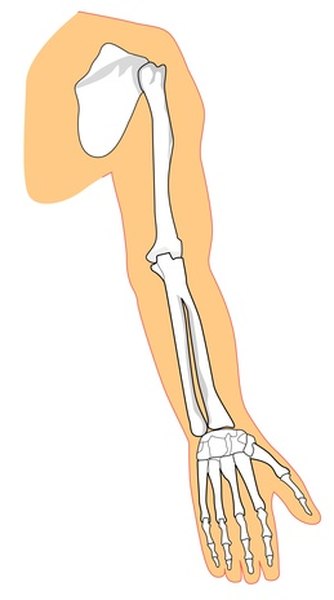What Muscles Are Used in Climbing Ropes?

Rope climbing is a traditional exercise used by armed forces to prepare soldiers for climbing up and down from hovering helicopters and scaling tall buildings. Rope climbing has also become a mainstream conditioning exercise used by certain training groups like Cross Fit. Rope climbing effectively engages many of your body’s muscles and is especially popular with mixed martial artists, judo players and rock climbers.
Fingers and Forearms

climbing hand image by Ian Holmes from Fotolia.com
Climbing a rope requires strong hands and forearms. The flexor carpi ulnaris, flexor digitorum superficialis, flexor carpi radialis, flexor pollicis longus and flexor digitorum profundus all work together to keep your fingers closed firmly around the rope. Although your fingers may strain as you grip the rope, your arms will be engaged and receive a challenging workout because the muscles used to grip the rope originate in your forearms.
Upper Arms
The muscles in your arms are essential for rope climbing and work in synergy to forcefully bend your elbow and help you climb. The biggest and strongest muscle is your biceps brachii, located at the front of your upper arm. In addition, the brachialis muscle beneath your biceps also exerts force on your elbow joint, as does the brachioradicalis muscle of the upper forearm. Rope climbing provides an effective workout for all of the muscles on the front of your upper arms.
Shoulders
The latisimus dorsi, lats for short, is the main muscle involved in pulling your body up the rope. Located on the sides of your back and attached to your humerus, these powerful muscles provide most of the shoulder movement responsible for heaving you up the rope. Although your lats are the primary muscles used to extend your shoulders, numerous other upper body muscles are also called upon to assist. For example, your lower trapezius muscles contract to hold your shoulders down as you pull yourself up the rope. In addition, your serratus anterior holds your scapula flat to your rib cage.
Muscles of the Lower Body
Although rope climbing is primarily an upper body activity, your legs are also used to help propel you up the rope. Proficient rope climbers will use their legs as much as possible to reduce the load on their weaker upper body muscles. This is especially important if you are climbing a rope while carrying heavy equipment—a common situation for armed forces personnel. The muscles of your inner thighs—adductor magnus, brevis and longus—squeeze your legs together to stop you from sliding down the rope as you move your hands up for the next pull. In conjunction with the pulling action of your arms, your gluteus maximus and hamstring muscles work to extend your hips to push you up the rope.
References
- "Strength Training Anatomy"; Frederic Delavier; 2010
- "Bodybuilding Anatomy"; Nick Evans M.D; 2006
- "Principles of Anatomy & Physiology, Ninth Edition"; Sandra R. Grabowski & Gerald J. Tortora; 2000
- Trecroci A, Cavaggioni L, Caccia R, Alberti G. Jump Rope Training: Balance and Motor Coordination in Preadolescent Soccer Players. J Sports Sci Med. 2015;14(4):792-798.
- Baumgartner L, Weberruß H, Oberhoffer-fritz R, Schulz T. Vascular Structure and Function in Children and Adolescents: What Impact Do Physical Activity, Health-Related Physical Fitness, and Exercise Have? Front Pediatr. 2020;8:103. doi:10.3389/fped.2020.00103
- Ozer D, Duzgun I, Baltaci G, Karacan S, Colakoglu F. The effects of rope or weighted rope jump training on strength, coordination and proprioception in adolescent female volleyball players. J Sports Med Phys Fitness. 2011;51(2):211-219.
- Van Hooren B, Peake JM. Do We Need a Cool-Down After Exercise? A Narrative Review of the Psychophysiological Effects and the Effects on Performance, Injuries and the Long-Term Adaptive Response. Sports Med. 2018;48(7):1575-1595. doi:10.1007/s40279-018-0916-2
Writer Bio
Patrick Dale is an experienced writer who has written for a plethora of international publications. A lecturer and trainer of trainers, he is a contributor to "Ultra-FIT" magazine and has been involved in fitness for more than 22 years. He authored the books "Military Fitness", "Live Long, Live Strong" and "No Gym? No Problem!" and served in the Royal Marines for five years.
